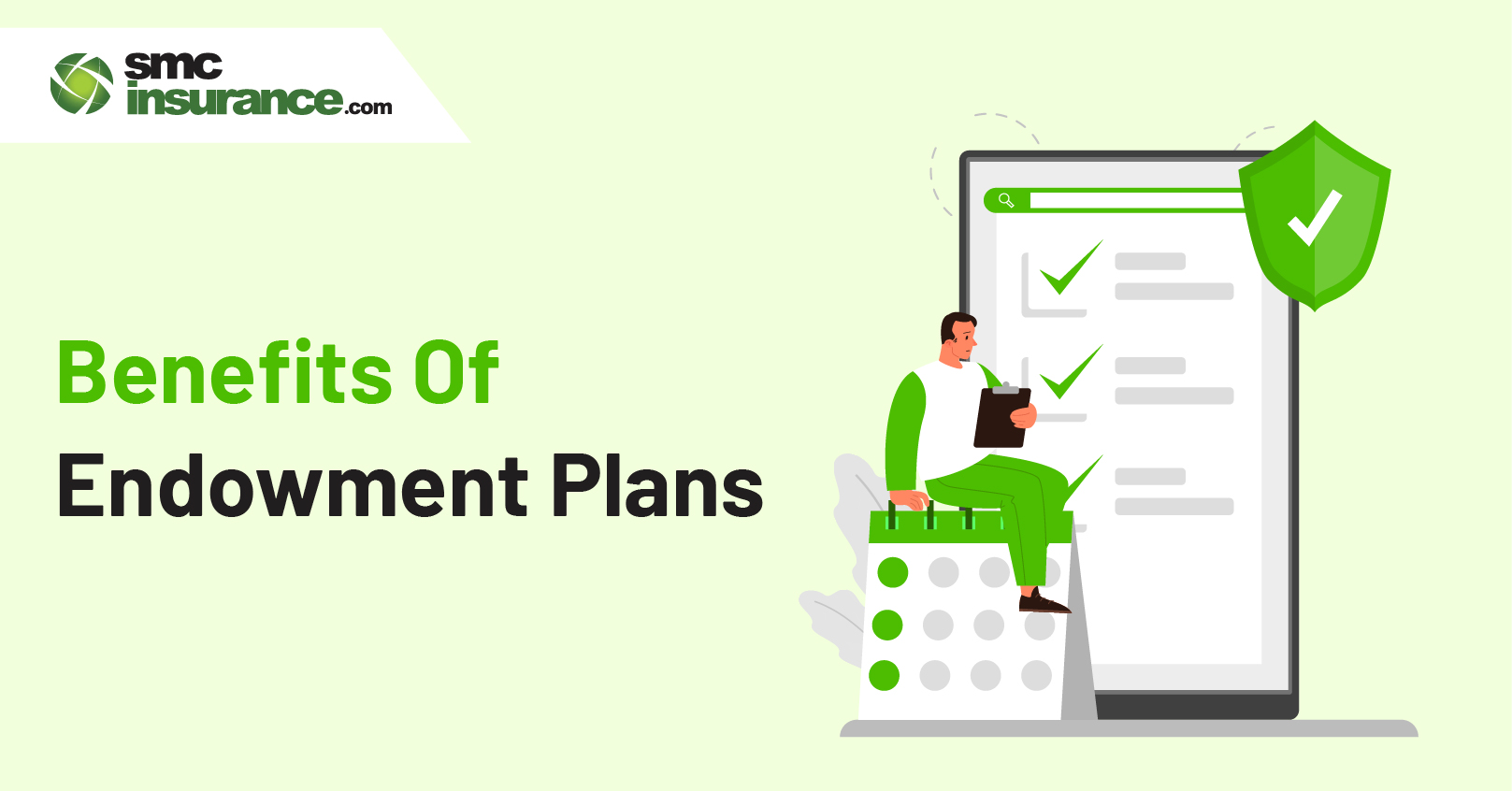Financial planning for your future calls for planning for financial goals and financial security. You may make meticulously planned investments to generate wealth and raise a nest egg for your goals. On the other hand, you will have to buy life insurance to secure these goals. Wouldn't it be great if these two features were combined into one plan?
Yes! You can get all of that and more with an Endowment Plan. Endowment Plans, also known as Guaranteed Plans, are simply insurance plans that combine insurance coverage and savings. The significance of an Endowment Plan lies in the fact that it serves as a means to meet your financial needs - your child's education/marriage, house purchase, etc, at the same time, also providing a dash of financial security to your family on the side
To ensure you get the most out of your insurance policy, it is always essential to learn about its benefits before you invest in it.
Let's take a look at the benefits an Endowment Plan offers.
Calculate Your Life Insurance Premium
Benefits Provided By Non-Linked Endowment Plans
- Guaranteed Lump Sum - Maturity Benefit
An Endowment Plan gives you a guaranteed lump sum once the policy period ends. This amount is called the maturity benefit. The maturity benefit can vary across products and is given when you survive the policy period.
Maturity Benefit = Sum Assured + Bonuses (if you have chosen a participating Endowment Plan)
The maturity benefit can either be - - The amount you choose at the time of policy purchase. You need to pick an amount that will comfortably cover your needs and financial goals.
- The premiums you choose at the time of policy purchase. You can select the premium based on your convenience. The sum assured in this case shall be -
- The total premiums payable under the policy
Or
A percentage of the total premiums payable under the policy. The minimum and maximum percentages are determined by the age at which you bought the policy, which can range from 90% to 180%, 100% to 300%, etc.
Note: This will not include taxes, rider premiums, extra underwriting premiums, and modal premiums.
Example: Sahil purchases an Endowment Plan with a cover amount of Rs 45 lakhs in 2022. He chooses the policy duration to be 20 years. The premium is estimated to be Rs 2,00,000.
If Sahil survives the policy term,
| Year | Maturity Benefit |
| 2041 | Rs 45 Lakhs |
-
Death Benefit
This is the part of the plan that provides the financial protection your family needs, just in case you are not around to fulfil their dreams. The death benefit is the life insurance component of the policy, that will be paid to your nominee should you pass away unexpectedly during the policy period. Once the death benefit is paid, the policy is terminated.
Your family can use the death benefit to meet their financial needs - paying off debt liabilities, child’s education, marriage etc. without compromising on their lifestyle in your absence.
Depending on the product, the death benefit can vary. It can either be a Sum Assured chosen by you OR a multiple of the chosen annual premium.
The death benefit shall be paid to the nominee in the form of -
Lump Sum
Your nominee can choose to receive the death benefit as a lump sum. Some products also give your nominee the option to receive it in instalments periodically.
Instalments
Your nominee can also receive the death benefit in staggered instalments. The duration, percentage and frequency may vary across products. For instance, 20% of the sum assured can be paid annually over a period of five years.
Example: Let's take a look at Sahil’s case again. Sahil has appointed his wife, Rekha as his nominee, and the death benefit will be paid to her if he passes away during the policy period.
If Sahil passes away in the 13th policy year,
| Year | Death Benefit |
| 2034 - 35 | Rs.45 lakhs |
In 2034 - 35, Rekha will receive Rs 45 lakhs. As soon as she receives this death benefit, the policy will terminate.
-
Low-Risk Investment
Investing in Endowment Plans, especially non-linked plans is considered to be relatively safer than other types of investments. Other financial instruments, such as mutual funds and ULIPs, are more volatile and fluctuate with stock market movements.
Endowment Plans offer guaranteed returns to you or your nominee –
Maturity Benefit
If you survive the policy period, you'll get the maturity benefit.
Death Benefit
Your nominee shall receive the death benefit in case you pass away.
-
Serve As Collateral
Did you know you can use your Endowment Plan as collateral for loans? You can use your plan to obtain a loan to meet any of your financial goals, whether they are long-term like starting a new business, or short-term like paying home loan instalments, buying a vehicle, etc.
-
Tax Benefits
Endowment Plans also provide tax benefits for premiums and maturity benefits. These perks are provided under different sections of the Income Tax Act of 1961.
A tax deduction of up to Rs. 1,50,000 is available under Section 80C of the Income Tax Act, 1961.
Section 10(10D) exempts the maturity benefit you receive at the end of the policy term from taxation.
Summing Up!
An Endowment Plan offers both insurance coverage and savings, which makes it one-of-a-kind. However, before you invest your hard-earned money, do your research and make sure the policy meets your financial goals. You should also read the policy terms carefully - to avoid hassles down the road.





 Taxi Insurance
Taxi Insurance

